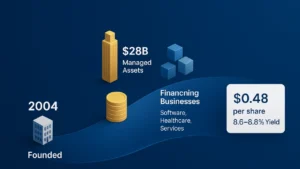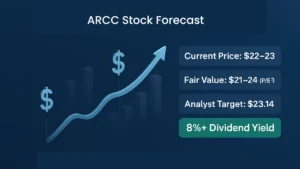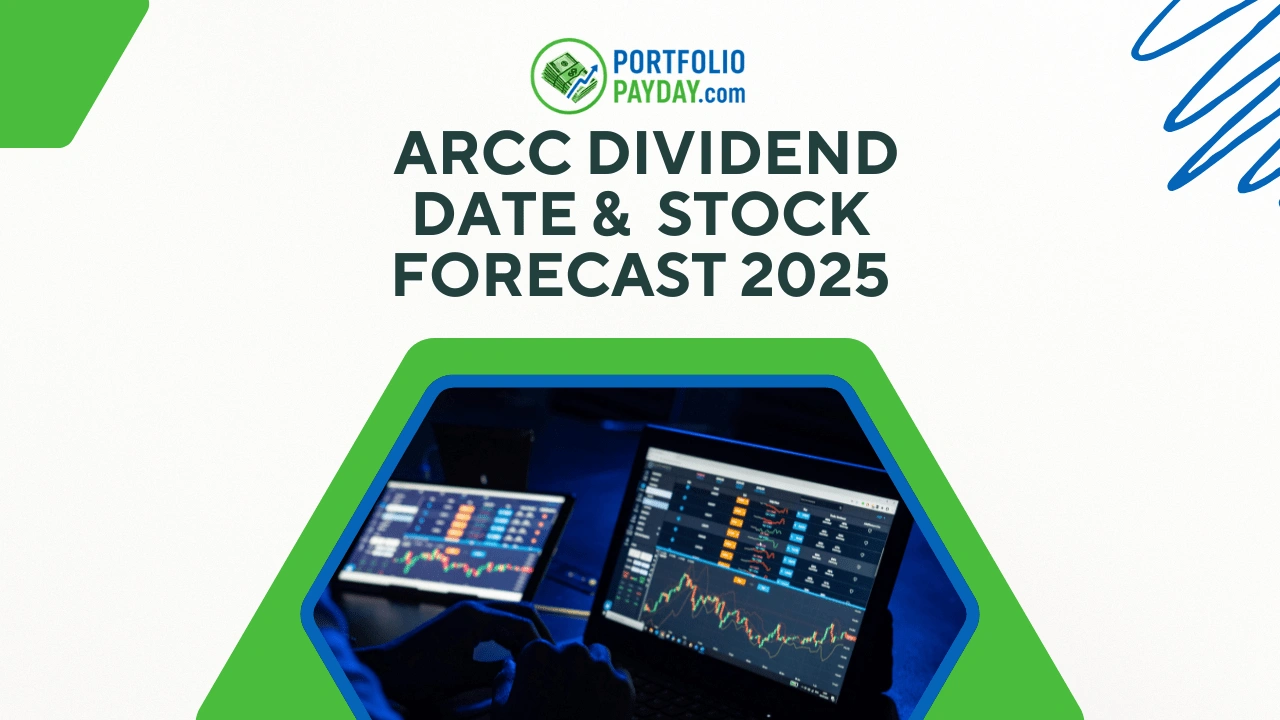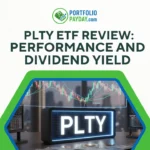Disclaimer: The following is for informational purposes only and not financial advice. Always do your own due diligence. I am not a licensed advisor.
ARCC Dividend Date, Ex-Dividend Date, and Stock Forecast: A Closer Look
For income-focused investors, few names spark as much interest as Ares Capital Corporation (ARCC). As one of the largest business development companies (BDCs) in the U.S., ARCC has built a reputation for steady dividends, a resilient portfolio, and consistent long-term performance.
But beyond its yield, investors often want clarity on three key points:
- When is the ARCC dividend date?
- What is the ARCC ex-dividend date?
- And most importantly, what does the ARCC stock forecast look like?
Let’s walk through these questions, not with dry numbers, but with a story that connects the fundamentals, the risks, and the opportunity ARCC offers today.
ARCC: A Dividend Powerhouse
Since its launch in 2004, Ares Capital has grown into the largest publicly traded BDC, managing nearly $28 billion in investments. Its mission is to provide financing to mid-sized businesses across various industries, including software, healthcare, and business services.
What makes ARCC different is not just its size, but its track record of payouts. Investors have seen decades of quarterly dividends, often supported by spillover income—a kind of safety cushion the company holds to ensure dividends continue even when earnings dip.
Currently, ARCC pays $0.48 per share quarterly, translating to a yield around 8.6%–8.8%, well above the market average.

ARCC Dividend Date vs. Ex-Dividend Date
Here’s where many investors get confused.
- Dividend Date (Payment Date): This is when shareholders actually receive the dividend in their accounts.
- Ex-Dividend Date: This is the cut-off. If you want the dividend, you must own ARCC shares before the ex-dividend date. Buy on or after, and you’ll miss that quarter’s payout.
For ARCC, ex-dividend dates typically occur mid-quarter, with payments made a few weeks later. For example, if the ex-dividend date is early September, the dividend is usually paid in late September.
This schedule has been consistent, making ARCC one of the most predictable income plays in the BDC space.
How Safe Is the Dividend?
The story of ARCC’s dividend strength is built on two pillars:
- Coverage by Earnings: In recent quarters, ARCC generated net investment income (NII) of around $0.50 per share. With the dividend at $0.48, coverage remains tight but sufficient.
- Spillover Cushion: The company carries roughly $1.29 per share in undistributed taxable income. This means even if earnings fell sharply for several quarters, ARCC could still maintain its dividend.
This combination explains why analysts often label ARCC as the “gold standard” among BDCs.

The Portfolio Behind the Payout
Dividends are only as safe as the underlying portfolio. ARCC’s holdings are spread across over 550 companies, with the top 15 representing just 25% of total exposure. No single borrower dominates, reducing the risk of one bad loan shaking the system.
- 60% of assets are in first-lien senior secured loans (the safest layer of lending).
- The rest are spread across second-lien loans and equity stakes.
- Industry exposure is broad, with software/services at 24%, healthcare at 13%, and smaller slices across insurance, energy, and consumer sectors.
Non-accrual loans (borrowers behind on payments) remain low—around 1%–2% of the portfolio, far below levels seen in past financial crises.
Balance Sheet and Debt Outlook
Another reason ARCC sustains its dividend is its conservative debt management. Maturities are staggered well into the 2030s, with no near-term refinancing cliff. At the same time, ARCC has already repaid some 2025 notes, keeping pressure low.
This balance gives the company flexibility to withstand economic shifts, including rate changes that impact lending income.
ARCC Stock Forecast: What’s Next?
The big question: Is ARCC stock worth buying now?
- Current Price: Around $22–23 per share.
- Valuation: Trades at a price-to-earnings ratio of about 11, with a fair value estimated around $21–24.
- Analyst Forecast: Most analysts set a 12-month target near $23.14, signaling modest upside of about 3%.
In plain terms: ARCC isn’t a growth rocket. You don’t buy it for share price appreciation. Instead, you buy for the steady 8%+ yield and the reassurance of a well-managed balance sheet.

Risks to Watch
No investment is without risks, and ARCC has its share:
- Interest Rate Cuts: BDCs earn more when rates are high. If rates fall, new loans generate less income. ARCC is somewhat protected with more fixed debt than peers, but earnings could still slip.
- Economic Slowdown: A broad downturn could stress portfolio companies, raising defaults. Diversification helps, but not entirely.
- Valuation Premium: At times, ARCC trades above its net asset value (NAV). Buying too high reduces long-term returns.
Despite these, the company’s conservative approach, large spillover, and disciplined lending help mitigate risk.
Is ARCC Worth Holding?
If you’re looking for a steady income, ARCC checks the boxes:
- A reliable dividend date and ex-dividend schedule.
- Consistent coverage backed by strong spillover.
- A diversified, conservatively managed portfolio.
- A stock forecast that points to stability, not surprises.
You won’t get explosive growth, but you’ll likely sleep well knowing your dividends are arriving quarter after quarter. For many retirees and income investors, that’s exactly the point.









